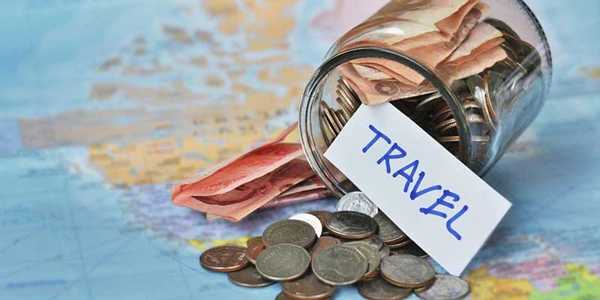Best Budget Airlines for International Travel (2026 Edition)
Flying abroad doesn’t have to be expensive. The best budget airlines for international travel now offer affordable fares and reliable service, giving travelers the freedom to explore more countries on a smaller budget.
Low-cost carriers have transformed global travel by letting passengers pay only for what they need. With flexible options and expanding routes, they’ve made seeing the world simpler, cheaper, and more accessible than ever before.
Why Budget Airlines Are Changing International Travel
Budget airlines have opened international travel to millions who once couldn’t afford it. Rising airfare prices from full-service carriers pushed travelers to seek cheaper options — and low-cost airlines stepped in with streamlined services.

Today, many of these airlines use modern aircraft, quick turnaround times, and digital booking systems to cut costs. Travelers now enjoy safe, reliable, and affordable international flights across major continents.
What to Know Before Choosing a Budget Airline
Price vs. Value — Understanding What’s Included
Budget airlines keep base fares low by separating extra services like baggage and seat selection. Always check what’s included before you book. A slightly higher ticket may actually cost less overall if it covers checked bags or meals. Compare total costs, not just the fare you see first.
Comfort and Onboard Experience
Low-cost carriers often trade luxury for savings. Seats are smaller, and entertainment systems are minimal. Bringing your own device, snacks, and a refillable water bottle helps make the flight more enjoyable. These small preparations turn long hours into a smooth experience.
Baggage and Check-in Policies
Each airline sets different baggage limits. Carry-on and checked bag fees can add up quickly, so check the rules early. Online check-in often saves time and helps you avoid airport fees. Always confirm baggage size and weight before heading to the airport.
Safety and Reliability
Budget airlines follow the same international safety regulations as traditional carriers. Every operator must comply with oversight from bodies like the International Air Transport Association (IATA). The price difference comes from fewer extras, not lower safety standards.
Best Budget Airlines for International Travel by Region
North America
Southwest Airlines: Known for free checked bags and flexible change policies. Ideal for trips within the U.S., Mexico, and the Caribbean.
JetBlue: Great balance of comfort and price for routes between the U.S. and Europe.
WestJet: A reliable Canadian carrier with strong coverage across North America and Europe.
Europe
Ryanair: One of Europe’s largest low-cost airlines, famous for cheap short-haul flights.
easyJet: A trusted UK-based option known for punctuality and straightforward pricing.
Wizz Air: Popular for Central and Eastern Europe routes, offering frequent discounts.
Asia-Pacific
AirAsia: Serves more than 130 destinations with competitive pricing across Asia and Australia.
Scoot: Singapore-based airline offering affordable long-haul routes with good comfort.
Cebu Pacific: Focused on Southeast Asia, known for low fares and friendly service.

Middle East & Africa
FlyDubai: Offers low-cost travel from Dubai to Asia, Africa, and Europe.
Jazeera Airways: Kuwait-based carrier connecting the Middle East affordably.
Fastjet: One of Africa’s top budget options for short regional flights.
Latin America
Viva Aerobus: Best for Mexico–U.S. travel with extremely low fares.
Sky Airline: Expanding fast across South America with new aircraft.
Gol Airlines: A Brazilian favorite that balances affordability with reliability.
Each region has its standout airline, but all share three key strengths: transparent pricing, dependable service, and international safety compliance.
How to Find the Cheapest International Flights on Budget Airlines
Use Reliable Flight Comparison Platforms
Websites like Kayak and Momondo help you compare fares across multiple airlines and dates. Use their flexible search tools to view prices by month or region, helping you spot real deals instead of short-term promotions.
Book at the Right Time
Most travelers find the best international flight prices around 6–8 weeks before departure. Budget airlines often release discounted fares early, then raise them closer to the travel date. Booking directly through the airline’s website also helps you avoid third-party markups.
Fly Smart — Airports and Days That Save You Money
Flying midweek or from smaller airports can lower your total cost. For example, flights from Paris Orly often cost less than those from Charles de Gaulle. Being flexible with travel dates and departure points can make a big difference in final ticket prices.
Tips to Make the Most of Budget International Flights
Optimize Your Packing
Pack light and choose a carry-on that fits airline rules. Wearing heavier clothing on the plane — like jackets or boots — helps stay within weight limits. Lightweight packing cubes also help keep essentials organized.
Bring Your Own Comfort Kit
Budget airlines usually skip free amenities, so bring your own pillow, eye mask, and snacks. Download music or shows before takeoff, since many planes don’t have onboard Wi-Fi or screens.
Maximize Loyalty and Rewards
Several budget carriers run loyalty programs that can save money over time. JetBlue’s TrueBlue and AirAsia’s BIG Loyalty, for instance, let you earn points for future discounts. Even occasional travelers can benefit from signing up.

Are Budget Airlines Worth It for Long-Haul Flights?
Budget airlines are expanding to longer routes, offering fares hundreds of dollars cheaper than traditional carriers. New, fuel-efficient aircraft make these flights possible without sacrificing safety.
However, longer flights can feel less comfortable without free meals or wide seats. Travelers who prioritise comfort or flexibility might prefer full-service airlines. Still, for most, the savings outweigh the trade-offs — and sources like Travel Weekly report that long-haul budget travel continues to grow steadily worldwide.
Choosing the Best Budget Airline for Your Trip
The best budget airlines for international travel depend on where you’re going and what matters most — price, comfort, or flexibility. For short routes, Ryanair or AirAsia deliver unbeatable value. For longer distances, JetBlue and Scoot balance comfort with affordability.
With careful planning, you can explore multiple countries for less than the price of one traditional long-haul ticket. Budget airlines prove that traveling the world doesn’t have to mean spending a fortune — just smart booking and the right carrier.
Sources
- Learned practical methods
- Solved my questions
- Inspired new ideas











